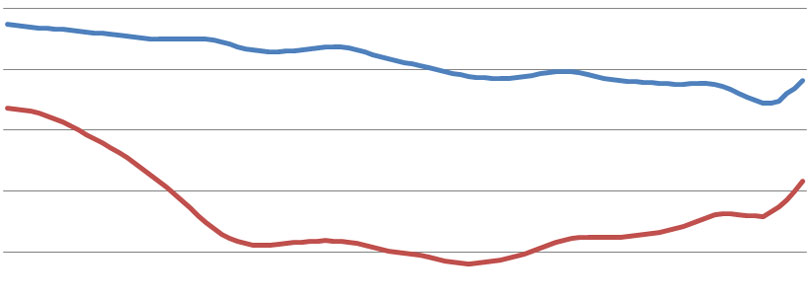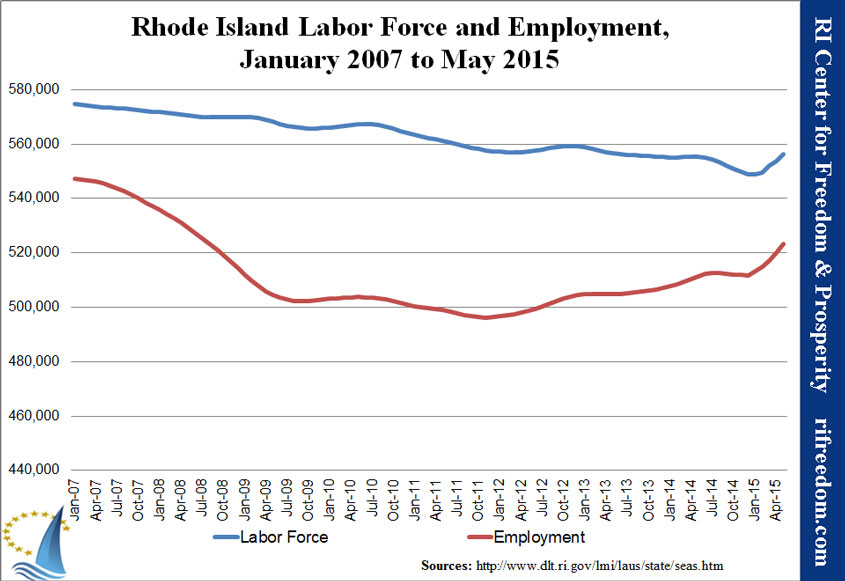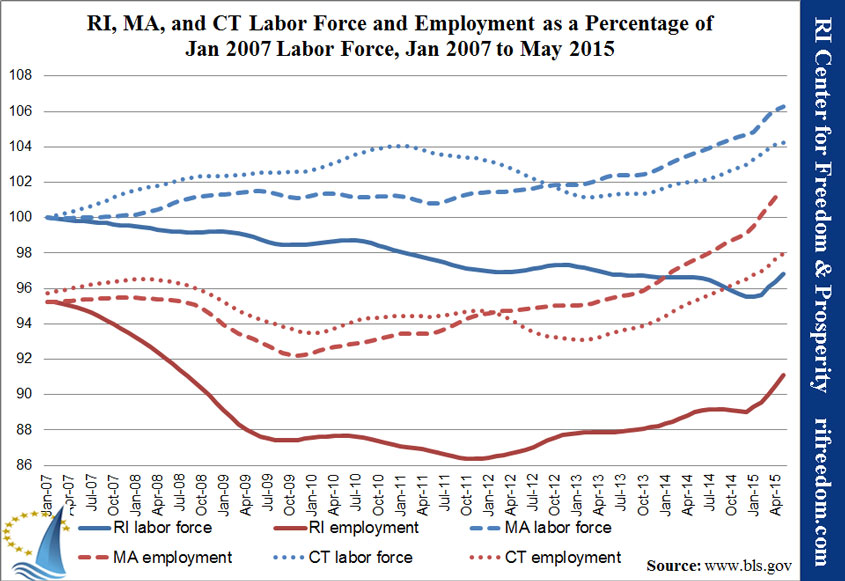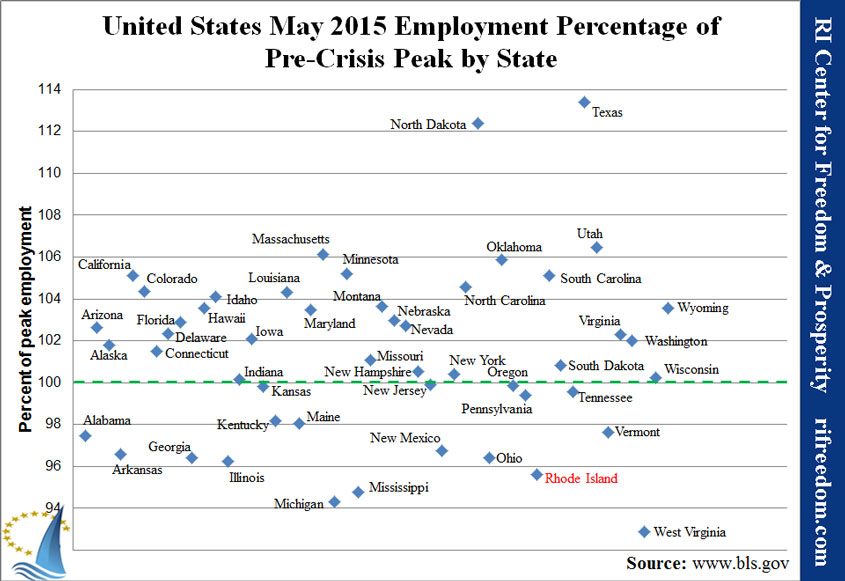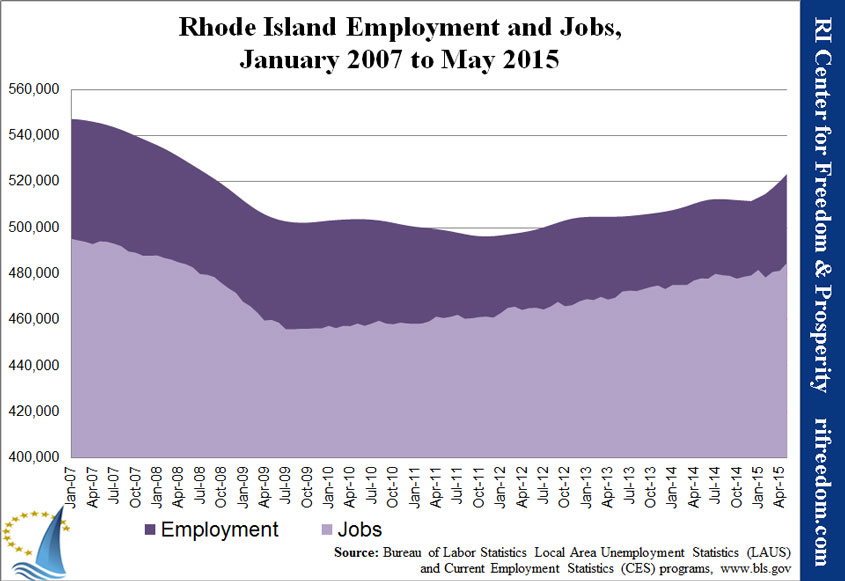May 2015 Employment: Milestones and Missing Workers
As I noted in my corresponding monthly post on the Web site of the RI Center for Freedom & Prosperity, the official unemployment rate for the state fell below 6% for the first time since the Thanksgiving-Christmas span for a fifth grader, at that time, who graduated from high school this year. As I also noted, if not for Rhode Islanders’ leaving the labor force, the state’s unemployment rate would still have been 11% as recently as December 2014.
The other piece of the misleading puzzle is the annual inexplicable leap in employment and labor force. If you believe the numbers put out by the federal Bureau of Labor Statistics (BLS), Rhode Island’s unemployment rate has fallen about a full percentage point every six months beginning in late 2013. The difference in the last six months, however, is that it didn’t result from a decrease in labor force. That’s quite a difference, as the following chart shows:
The next chart shows that Rhode Island’s neighbors have also been experiencing growth, but in their cases, it’s more of a continuation than a new development. It’s also interesting to note that in Massachusetts and (to some extent) in Connecticut, the growth as cooled a little in the last couple of months, while Rhode Island has continued its inexplicable climb.
Massachusetts’s improvement, incidentally, has been so dramatic that it has moved from crossing the 100% of pre-crash employment around this time last year to being fourth in the country by this measure. In contrast, Rhode Island is still fourth lowest, although the first-half boost has left the Ocean State looking like less of an outlier.
One positive note that isn’t as prone to skepticism comes with the separate measure of RI-based jobs. That’s the lighter area in the following chart, and the data is based more directly on tax information, rather than a heavily weighted survey. The significant change in May was that the numbers actually improved, finally, over where they were in July of last year. Unfortunately, that only translates into the slow growth that this measure has been experiencing since the end of the crash.
Where that leaves Rhode Island’s economy will be difficult to know for quite some time. At the very least, though, one can say that celebration would be premature.

